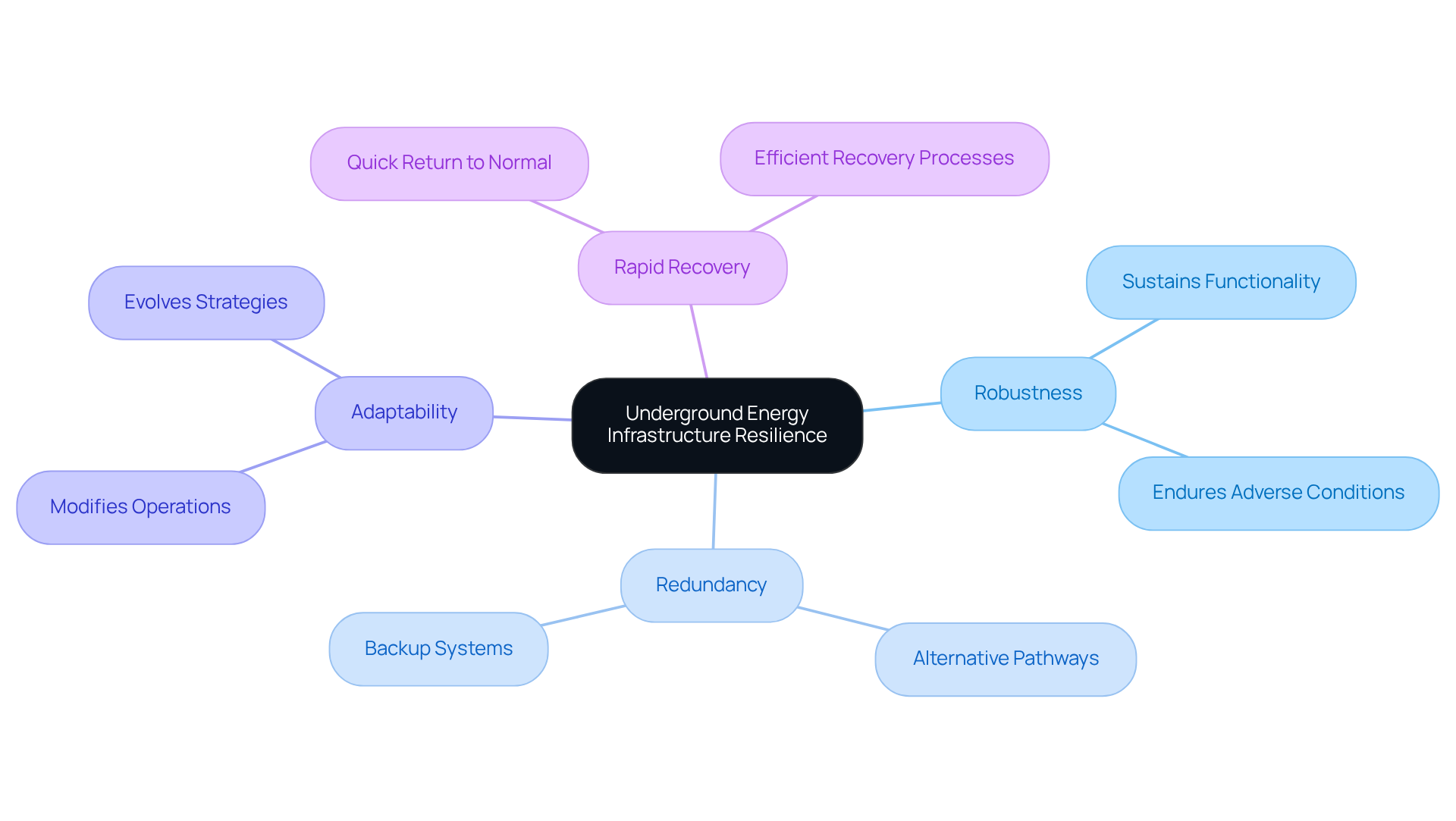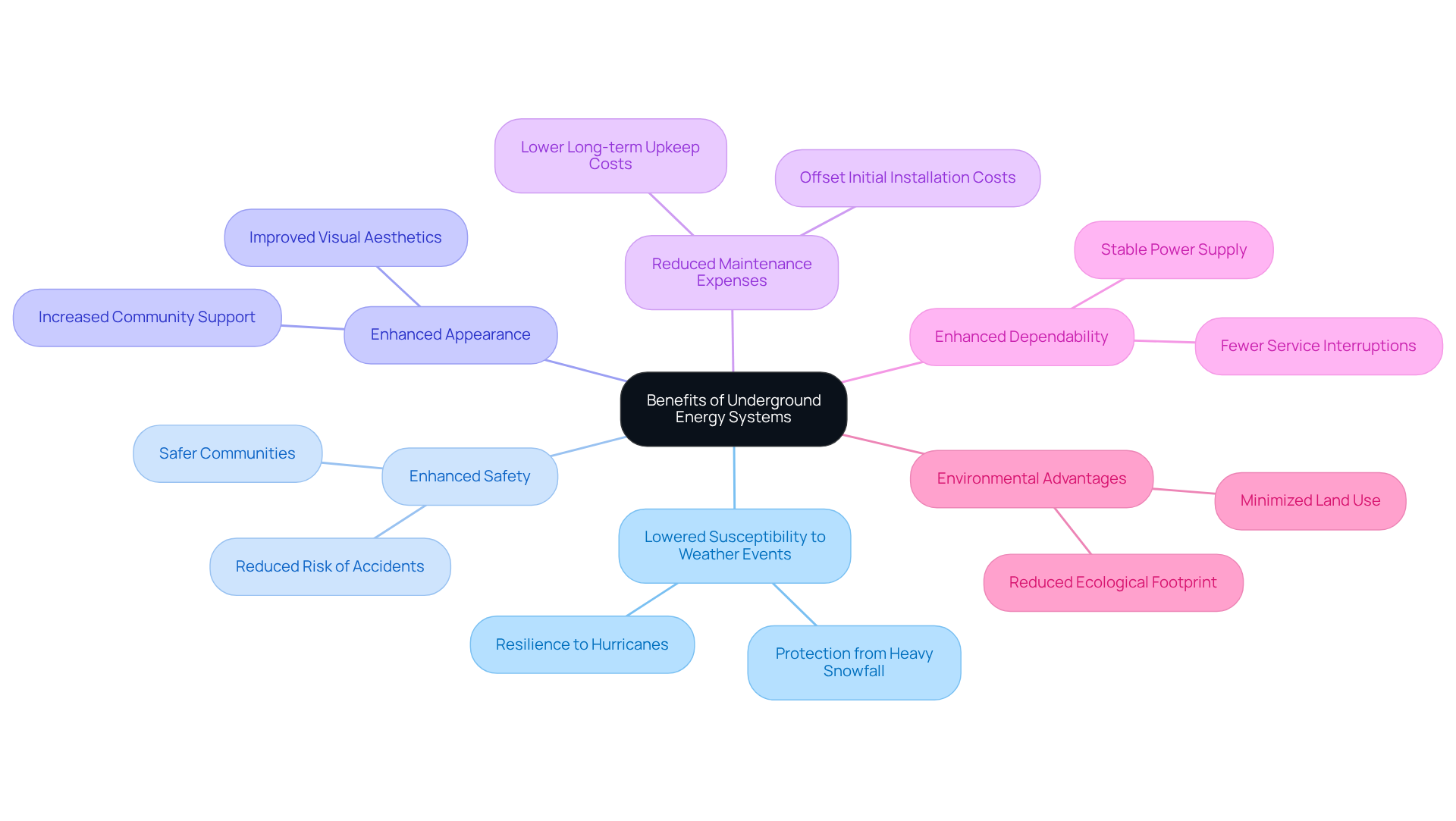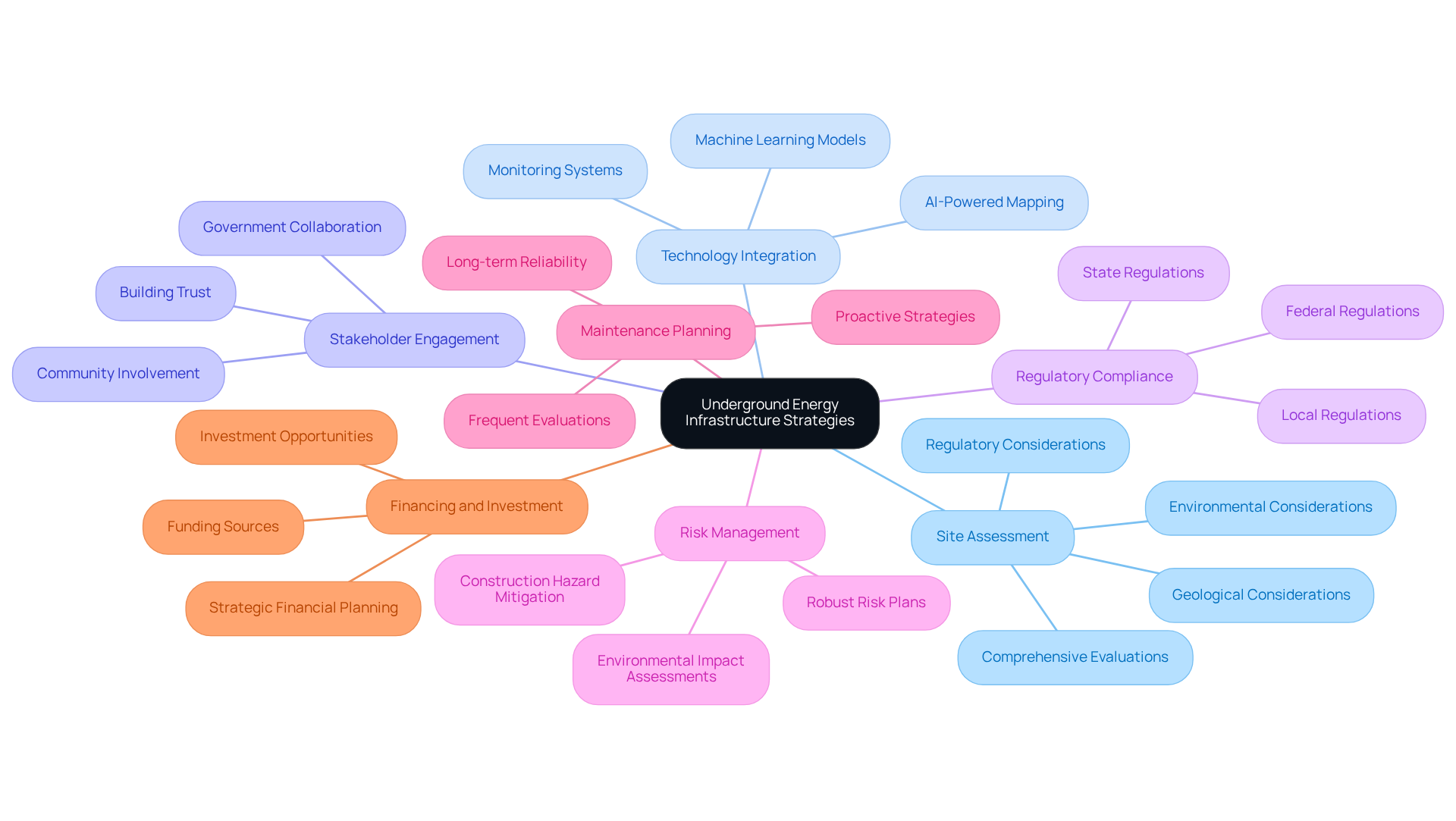Overview
The article emphasizes the critical need for enhancing the resilience of underground energy infrastructure, a vital component for enduring and recovering from disruptions. Key attributes such as robustness, redundancy, and adaptability are essential in this context.
To address these needs, it outlines effective strategies including:
- Thorough site assessments
- Technology integration
- Stakeholder engagement
These approaches not only fortify infrastructure but also ensure its capability to respond to unforeseen challenges, ultimately fostering a more secure energy landscape.
Introduction
The escalating challenges posed by climate change and urbanization render the resilience of underground energy infrastructure more critical than ever. This article explores essential strategies and benefits associated with enhancing the robustness of energy networks concealed beneath our cities. As stakeholders confront the complexities of implementing these systems, a pivotal question emerges: what are the most effective approaches to ensure that these vital infrastructures can withstand disruptions and consistently deliver reliable energy in the face of adversity?
Define Underground Energy Infrastructure Resilience
The resilience of underground energy infrastructure refers to the ability of energy networks, particularly those situated underground, to endure, adjust to, and recuperate from various disruptions including natural disasters, technical failures, and human-induced incidents. This resilience encompasses several essential attributes:
- Robustness: The ability to sustain functionality during adverse conditions.
- Redundancy: The presence of alternative methods or pathways that can take over in the event of a failure.
- Adaptability: The capacity to modify operations and strategies in response to evolving conditions.
- Rapid Recovery: The speed at which processes can return to normal operations following a disruption.
Understanding these characteristics is vital for stakeholders engaged in power projects focused on underground energy infrastructure resilience. It informs the design and implementation of robust frameworks that effectively mitigate risks associated with underground operations.

Explore Benefits of Underground Energy Systems
Underground energy systems offer numerous advantages that significantly enhance infrastructure resilience:
- Lowered Susceptibility to Weather Events: These structures are inherently less vulnerable to damage from extreme weather phenomena, such as hurricanes and heavy snowfall, which often disrupt overhead lines. Research indicates that underground energy infrastructure resilience allows high-voltage networks located below ground to be less susceptible to harm from extreme weather, ensuring power supply stability during unfavorable conditions.
- Enhanced Safety: By burying power lines, the risk of accidents and injuries associated with downed lines is markedly reduced, contributing to safer communities. Phil Harding observed that sustainable power solutions, including underground systems, enhance safety and reliability.
- Enhanced Appearance: The removal of overhead lines significantly boosts the visual attractiveness of landscapes, fostering community acceptance and support for utility projects. This aesthetic improvement can lead to increased public backing for development initiatives.
- Reduced Maintenance Expenses: Subterranean facilities typically require less regular upkeep than above-ground setups, resulting in considerable long-term financial benefits for utility providers. Case studies indicate that while initial installation costs may be higher, the long-term savings from reduced maintenance can offset these expenses.
- Enhanced Dependability: With fewer interruptions from external influences, buried power networks provide a more stable and reliable service for consumers, addressing the complexities of power demand. The Pacific Gas & Electric's Underground Initiative exemplifies this, as it aims to mitigate wildfire risks and enhance service reliability.
- Environmental Advantages: These frameworks minimize land use and reduce the ecological footprint of power facilities, aligning with sustainability goals and promoting a cleaner environment. Reports indicate that subterranean networks lead to minimized visual effects and wildlife disruptions, making them a more sustainable option for power facilities.
The tactical implementation of subterranean power systems is not only a progressive approach to planning development but also a crucial measure for improving underground energy infrastructure resilience against climate change.

Implement Underground Energy Infrastructure: Strategies and Considerations
Implementing underground energy infrastructure resilience necessitates meticulous planning and consideration of various factors.
- Site Assessment: Comprehensive evaluations are crucial to identify optimal locations for subsurface installations, factoring in geological, environmental, and regulatory considerations. Effective site evaluation significantly influences the success of subterranean projects by mitigating risks associated with geological instability and environmental impacts. As industry experts assert, "a thorough risk assessment before project initiation is essential to avoid significant economic and environmental consequences."
- Technology Integration: Advanced technologies, such as AI-powered mapping and monitoring systems, are vital for enhancing the efficiency and accuracy of subsurface installations. For instance, the integration of machine learning models can refine site evaluation processes, leading to improved decision-making and reduced project costs. The Artificial Neural Network (ANN) model exemplifies this, demonstrating superior performance in predicting project outcomes and risks, achieving high accuracy across various applications.
- Stakeholder Engagement: Early engagement with local communities, government agencies, and other stakeholders is imperative to address concerns and build support. This collaborative approach fosters trust and ensures that the project aligns with community interests and regulatory requirements.
- Regulatory Compliance: Adhering to local, state, and federal regulations governing subsurface infrastructure is essential. Compliance not only mitigates legal risks but also enhances project credibility and community acceptance.
- Risk Management: A robust risk management plan must be developed to address potential challenges, including environmental impacts and construction hazards. This plan should incorporate best practices for identifying and mitigating risks associated with below-ground installations to ensure underground energy infrastructure resilience. A case study on the application of machine learning in HDD projects illustrates how effective risk management can lead to improved safety and operational effectiveness.
- Maintenance Planning: Establishing a proactive maintenance strategy is critical for monitoring and maintaining subsurface systems, ensuring long-term reliability and performance. Frequent evaluations and revisions can prevent costly breakdowns and extend the durability of the systems.
- Financing and Investment: Identifying funding sources and investment opportunities is essential for supporting the development of subterranean infrastructure projects. Strategic financial planning is crucial for securing the necessary resources to implement and sustain these initiatives. With electricity demand projected to rise by 25% by 2030 and an estimated $578 billion investment gap in the sector, addressing funding challenges has never been more critical.
By adhering to these strategies, stakeholders can effectively implement underground energy infrastructure resilience to enhance and contribute to a more sustainable energy future.

Conclusion
The resilience of underground energy infrastructure is crucial for ensuring reliable energy delivery in the face of escalating challenges posed by climate change and urbanization. By emphasizing the vital attributes of robustness, redundancy, adaptability, and rapid recovery, stakeholders can significantly improve the performance and reliability of energy networks concealed beneath our cities.
Key insights from this discussion underscore the myriad benefits of underground energy systems, including:
- Enhanced safety
- Reduced maintenance costs
- Improved environmental sustainability
Furthermore, effective implementation strategies—such as thorough site assessments, technology integration, and proactive stakeholder engagement—are essential for navigating the complexities inherent in underground infrastructure projects. By adhering to these strategies and best practices, stakeholders can effectively tackle potential challenges and cultivate community support, ultimately leading to a more resilient energy future.
In light of these insights, it is imperative for industry leaders and policymakers to prioritize the development of underground energy infrastructure. By investing in these systems, they can not only mitigate the impacts of climate change but also pave the way for sustainable energy solutions that benefit both communities and the environment. Embracing these strategies will ensure that energy networks remain robust and reliable, poised to meet the demands of future generations.
Frequently Asked Questions
What is underground energy infrastructure resilience?
Underground energy infrastructure resilience refers to the ability of energy networks located underground to endure, adjust to, and recover from various disruptions, such as natural disasters, technical failures, and human-induced incidents.
What are the essential attributes of underground energy infrastructure resilience?
The essential attributes include robustness (sustaining functionality during adverse conditions), redundancy (having alternative methods or pathways for failure), adaptability (modifying operations in response to changing conditions), and rapid recovery (the speed of returning to normal operations after a disruption).
Why is understanding resilience characteristics important for stakeholders?
Understanding these characteristics is vital for stakeholders involved in power projects as it helps inform the design and implementation of frameworks that effectively mitigate risks associated with underground operations.




